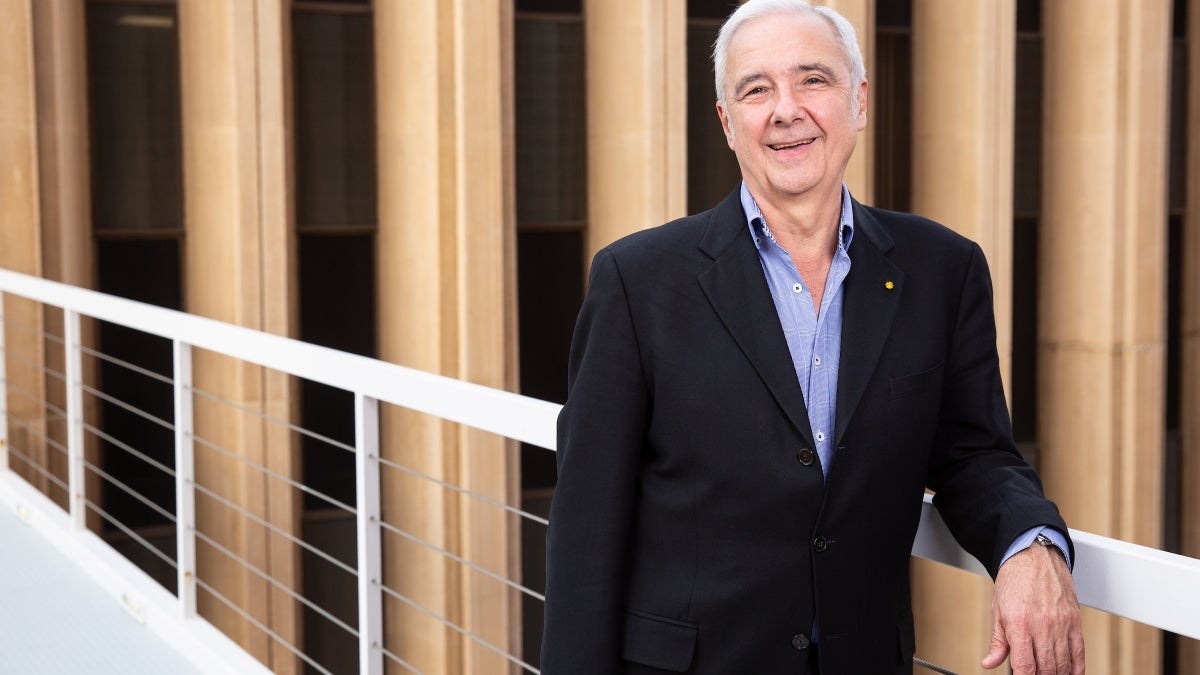Drylands account for 40 percent of the Earth’s surface. They are home to 30 percent of the people, including some of the most vulnerable, and half of the world’s livestock. About 35 percent of terrestrial carbon is fixed in drylands.
“Drylands are very important,” said Osvaldo Sala, an ecologistSala is also a Distinguished Sustainability Scientist in the Julie Ann Wrigley Global Institute of Sustainability and is the Julie A. Wrigley Chair in Life Sciences and Sustainability. in the School of Life Sciences at Arizona State University.
Sala has spent more than 35 years studying the driest places on Earth: the Patagonian steppe, the annual grasslands of California, the Kalahari in southern Africa, the Loess Plateau in China and the Chihuahuan Desert in New Mexico. His publications are among the most cited in the fields of ecology, sustainability and biology. He has more than 200 publications and 40,000 citations.
That work, and the recognition of his peers, has earned him the distinction of Regents’ Professor at ASU. Regents’ Professors are the elite of the academic world. To be awarded the distinction, scholars must be full professors, with outstanding achievements in their fields, who are nationally and internationally recognized by their peers.
No more than 3 percent of all faculty at ASU carry the distinction.
Sala’s work is particularly important in the Age of the Anthropocene.
“People who live in Africa and Asia are very dependent on natural resources, herders of cattle and goats and camels,” he said. “They also live in nations that are the most politically volatile, who are going to be affected first by climate change. Once there is climate change we are going to see prolonged droughts that are going to affect their ability to raise cattle, that is going to cause famines, and that’s going to create unrest and political instability.”
That, in turn, affects global sustainability — the biggest problem of our age.
“It’s impossible to figure out the sustainability puzzle without figuring out what to do with the drylands because of the immensity of all the things we talked about,” Sala said.
Figuring out part of the puzzle is Sala’s global Drought Net experiment, funded by the National Science Foundation.
Drought is happening all over the world. Is it affecting all ecosystems equally? Are there ecosystems that are more sensitive to drought, and others that are less sensitive to drought? How do we know? Are those that experienced a lot of drought in the past less sensitive to drought? Are those that have high diversity of species less sensitive to drought? Are those that are located in deep soils less sensitive to drought?
“We don’t know,” Sala said. “How we are going to answer those questions? So we designed a very simple experiment where we apply experimentally a drought that has a probability of occurring once every 100 years and distributed this very simple experiment over 100 locations all over the world, from Asia to South America to Africa to Australia to Europe.”
The first results will be analyzed this winter.
Sala is famous for his Sala shelters. A simple way of reducing incoming precipitation, they are a way of increasing droughts of different intensities. “They are all over the world now,” he said.
Osvaldo Sala with a Sala shelter. Photo courtesy of Sala Lab/ASU
In the future he would like to see ASU become the global center for the study of drylands.
“Arizona State University is in the desert,” he said. “We live in the drylands. If you look at the ASU charter, it says we are embedded in the community. I see working in drylands not only an opportunity for ASU, but our responsibility. We must do it. We don’t have a choice. We can lead the drylands research education of the world from here. Who else can do it? We should do it.”
Sala cherishes the honor of being named Regents’ Professor.
“I feel honored and humbled to be among ASU’s Regents' Professors who encompass excellence in so many fields of study,” he said. “My day-to-day work focuses on drylands that range from deserts to grasslands and savannas. I use field experimentation together with mathematical models in my quest to provide the necessary knowledge to achieve drylands sustainability, which is essential to achieve global sustainability.”
Top photo: Regents' Professor Osvaldo Sala (photographed on the ASU Tempe campus Jan. 28) is the founding director of the Global Drylands Center at ASU and is the president-elect of the Ecological Society of America. Photo by Deanna Dent/ASU Now
More Science and technology

Lucy's lasting legacy: Donald Johanson reflects on the discovery of a lifetime
Fifty years ago, in the dusty hills of Hadar, Ethiopia, a young paleoanthropologist, Donald Johanson, discovered what would become one of the most famous fossil skeletons of our lifetime — the 3.2…

ASU and Deca Technologies selected to lead $100M SHIELD USA project to strengthen U.S. semiconductor packaging capabilities
The National Institute of Standards and Technology — part of the U.S. Department of Commerce — announced today that it plans to award as much as $100 million to Arizona State University and Deca…

From food crops to cancer clinics: Lessons in extermination resistance
Just as crop-devouring insects evolve to resist pesticides, cancer cells can increase their lethality by developing resistance to treatment. In fact, most deaths from cancer are caused by the…

